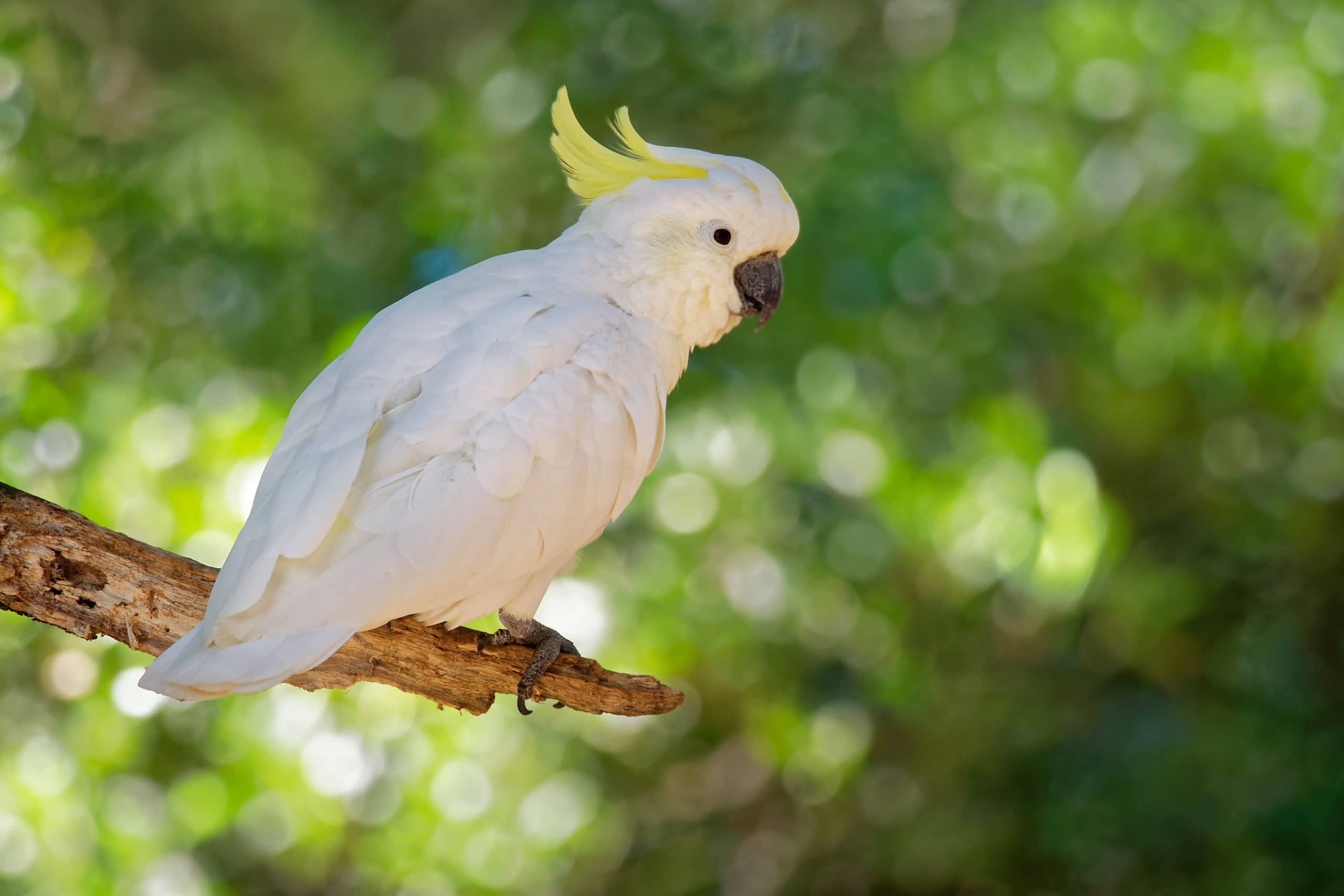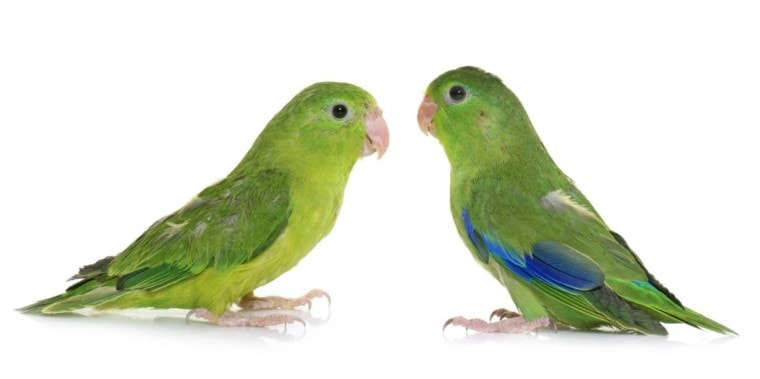
Parrotlets are adorable little birds. They are the smallest of parrot species commonly kept as pets. The parrotlet is active and friendly, but not as loud as many other parrots, making them a good choice for people who live in apartments.
If you didn’t get your parrotlet from a breeder who performed testing to determine the sex, you might be unaware of whether you have a male or female bird. Don’t worry, there are a few ways to tell the sex of your parrotlet.
Keep reading to learn how to identify if your parrotlet is a male or female.
 Why Should You Determine if Your Bird Is Male or Female?
Why Should You Determine if Your Bird Is Male or Female?
Both males and female parrotlets are similar in temperament. However, as a bird owner, you might be curious about whether or not your pet is a boy or a girl.
The main reason you would want to know the sex of your bird is for medical reasons. In particular, egg binding in females can be a major cause for concern. You may also be curious to know your parrotlet’s sex if you wish to choose a gender-specific name for your pet.
If you plan to add a second parrotlet of the opposite sex to your family, you’ll also need to be prepared for potential mating season and breeding.

Anatomy of a Parrotlet
You can identify the sex of many pets by looking at the genital areas. However, birds have internal genitalia. You won’t be able to tell which organs a bird has simply by looking at them. A veterinarian would need to examine the parrotlet to determine the sex.

 Physical Characteristics
Physical Characteristics
There are some physical characteristics that you can look for to discern whether your parrotlet is a male or female. These changes are most apparent when your pet bird is 5–7 months old (after their first mature molt). These typically include different-colored feathers in specific locations on the parrotlet’s body. The two parrotlet species most commonly kept as pets display different colors and markings between sexes. These include the following:
Pacific parrotlet
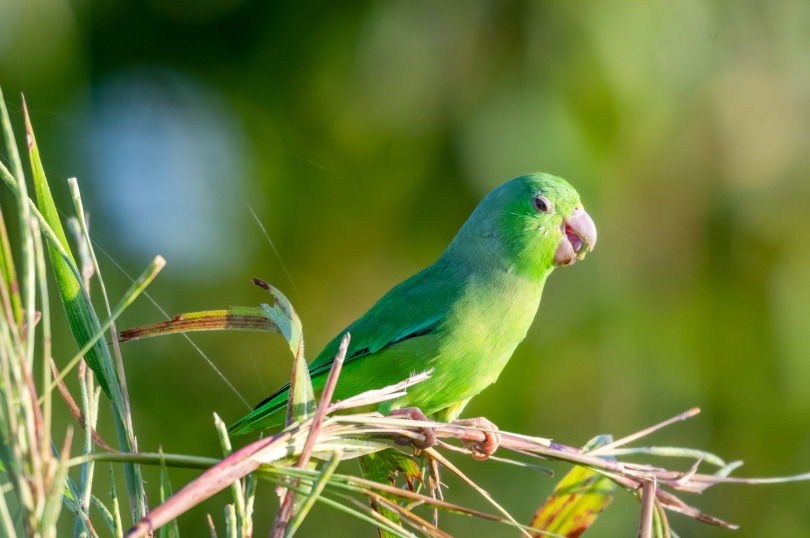
The typical Pacific parrotlet is green with a few differences between males and females. There are some color mutations of Pacific parrotlets that can change the base or highlight feather colors, making it more difficult to distinguish between the sexes.
Green-rumped parrotlet
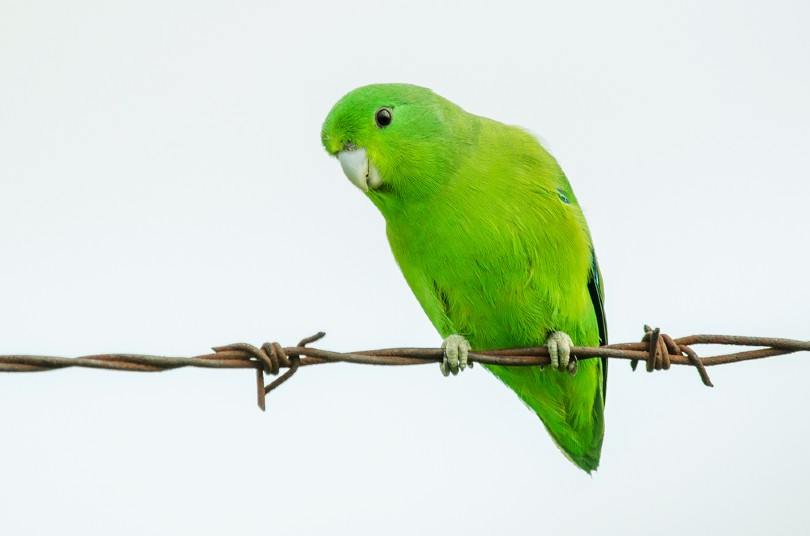
The green-rumped parrotlet also displays different feather color patterns between males and females.
 Methods of Testing
Methods of Testing
If you are having a difficult time determining the sex of your parrotlet just by its feather colors and markings, don’t worry! There are other ways to determine if you have a male or female bird.
Egg Laying
If your parrotlet lays eggs, then you know that you have a female bird. This may seem obvious, but some bird owners are not aware that a female parrotlet who is kept alone can still lay eggs. The eggs aren’t fertilized and won’t hatch.
However, egg-laying is not a foolproof method of sex determination in parrotlets. Females won’t lay eggs until after they are at least 3 years old. Sometimes they won’t lay eggs at all. So, while this is a possible method of testing whether you have a female or male bird, it’s not the most reliable way.
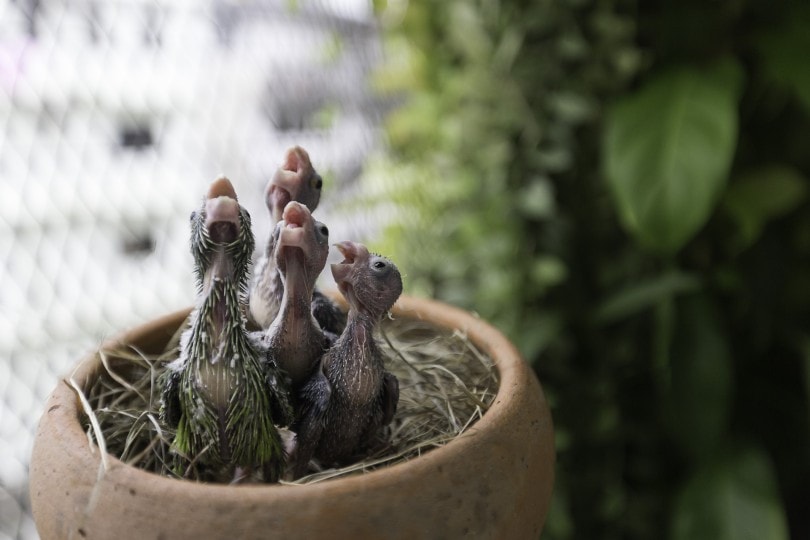
DNA Testing
Most breeders will perform DNA testing before selling birds so that the new owner will know the sex of their pet. However, this isn’t always the case. You may need to pay for DNA testing on your bird if it was not determined by the breeder.
The good news is the testing is often inexpensive and it’s pretty reliable. In most cases, your veterinarian will collect some molted feathers from your bird to send to a lab for what is known as DNA feather sexing. At other times, a small blood sample may be collected from your bird to determine their sex via appropriate laboratory tests as well.
There are some cases where lab results could be inaccurate, although this is rare.
Final Thoughts
There are several ways to determine the sex of your parrotlet. If you have one of the two common pet species, a survey of its marking and feather colors should give you an answer.
For other species, egg-laying is a sure sign that you have a female, although not all females will lay eggs. DNA testing is the most reliable and least intrusive option for most bird owners. Fortunately, the sexual dimorphism of mature parrotlets lets most owners easily identify the sex of their pet bird by simply looking at their feathers for specific markings.
You May Also Like:
- Parrotlet in a Harness: Is it a Good Idea? Is it Humane?
- What’s the Optimum Age to Bring a Parrotlet Home?
Featured Image Credit by Cynoclub, Shutterstock


 Why Should You Determine if Your Bird Is Male or Female?
Why Should You Determine if Your Bird Is Male or Female? Physical Characteristics
Physical Characteristics Methods of Testing
Methods of Testing

